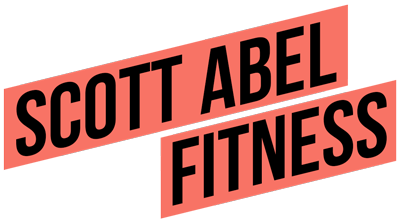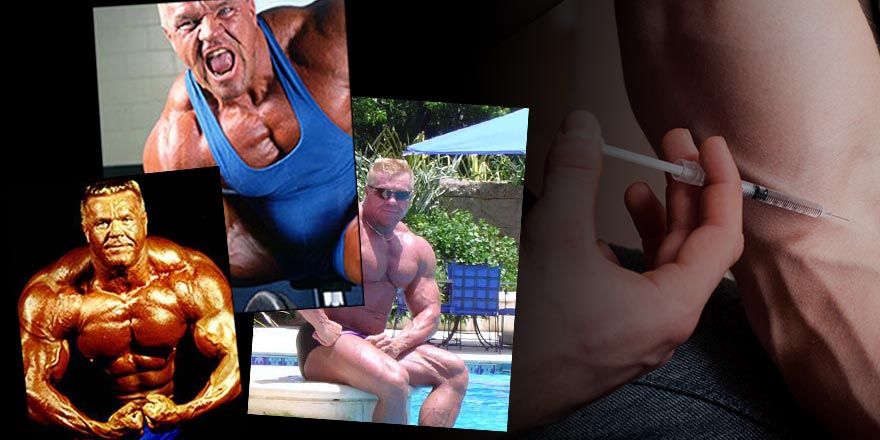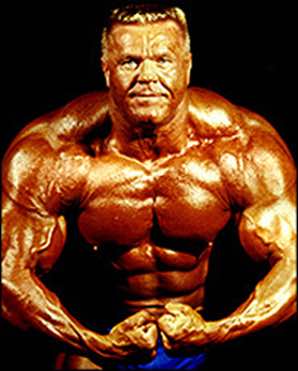In the last retrospective, I talked about the real beginnings of my career as what I call a “Big-C” Coach in the bodybuilding world.
In this one, I’ll be talking about the changes in the hardcore bodybuilding world that led me, eventually, to leaving it. The introduction of growth hormone and insulin, some of the things that went hand-in-hand with the increasingly underground drug and steroid subculture, and other cultural shifts in the industry and the toll it was taking on its competitors.
As I went “all-in” on my coaching career, I often allowed my own training to take a back seat to my coaching. I devoted myself to my clients. I was often working with competitors who I knew had the genetics to go all the way to the top in competition. I was getting more and more clients, and I had no real off-switch for handling the increased demands on my time.
However, I’d optimized my body and my methods, so this was less of a factor than it might otherwise have been.
I would often take months off from training and diet. I’d go right back to just looking like a normal guy. Then I’d get right back into training and within 8 to 10 weeks I was buff and lean, looking close to competition-level. (The Cycle Diet was a part of this.)
This kind of thing also, I think, worked to my advantage and helped my reputation. People who wonder how I got back into shape so quickly. (I’ll say it again: I’d optimized my body and my methods.)
However, that was only for the first few years of the 90s. I eventually got my time-management skills down pat and I eventually got my hunger back for hangin’ ‘n bangin’ old school and staying in shape all year long, consistently.
By the late 90s, my walking-around weight was between 250 and 260 lbs. Yes, I was lean, with “abs you can see through his shirt,” as one of the magazine writers once described it.
Here are a couple of pictures of me during those years:
The Entrance of Growth Hormone (GH), Insulin and the Bodybuilding Mass Monsters
By the later 1990s bodybuilders were getting big—and I mean big.
Growth hormone and insulin had not only entered the bodybuilding scene—these drugs were taking over the sub-culture.
They were also being talked about. Remember in my last article I mentioned the Ben Johnson thing. Even the general public knew about steroids, and more and more, if you were involved in the bodybuilding scene, you soon found out about growth hormone and insulin.
It seemed like this was all anyone wanted to talk about, though this was understandable, too.
Growth hormone was expensive to buy, and so this was also when real and true organized crime entered into bodybuilding pharmaceutical world. This was of course a very, VERY dangerous turn of events—never mind the dangers inherent in growth hormone and insulin use.
Let me pause here to say something: I never used insulin or growth hormone myself. I never advocated my clients use insulin, either. Still, that doesn’t mean I could stop them from doing so.
I remember one client I had was long distance, and he’d been preparing for a bodybuilding contest. I hadn’t heard from him in a while, and was beginning to wonder what was up. As it turns out, he’d been in jail.
Here’s why:
He’d been experimenting with insulin. He’d take insulin just after his workout; then, he’d drive home and eat his carbs. Well, apparently, he increased his dosage or something and the insulin hit his blood stream — hard — before he’d gotten all the way home.
Well, still on his way home, he side-swiped several cars… in a school district! They found him slumped over his steering wheel at the scene.
He was arrested for driving under the influence, and they put him in jail.
When they tested him, they found no intoxicants in his system. When he explained to them that he’d just taken too much insulin, they just assumed he was diabetic and they let him go. His insurance paid for all the other cars he damaged! He got lucky. This whole incident took place in a school district and he could have just as easily killed a child instead of side swiping a few cars.
Stories like this were enough to make me shake my head, but not enough for me to get out of the game. It’s hard for anyone to abandon a lucrative career.
Still, I could see how the increased use of growth hormone or GH and insulin was changing the bodybuilding game.
Guys were making insane gains — all through drugs. Middle weights were now superheavyweights. And yes, this was the drugs, full stop. The superheavyweight division didn’t even exist until around this time. I was even consulted at one point, on where they should draw the line on the superheavyweight category.
Previously, in my own competition days (the 1980s), the heavy weight division was any weight over 198 lbs. The superheavyweight then became anything over 225 lbs. Guys were gaining 30 and 40 lbs of muscle just because of the introduction of more drugs.
I knew guys who’d been middle weights, meaning they competed at 176 lbs and under. They’d been on steroids, but with growth hormone and insulin they were able to compete and 215 to 220 lbs.
This is why I started to see bodybuilding as a drug subculture more than anything.
Counterfeit Steroids
When there is serious money to be made in underground economies, some very unscrupulous people start showing up.
Some of the more industrious steroid counterfeiters were importing their own steroid and testosterone powders from abroad and mixing them up at home — but with no sanitary or quality controls.
Of course, they’d mix up about half the dose they claimed was in a vial and make double the profits. It was just like watering down alcohol, or if you had a strong strain of cannabis, but you mixed it up with chopped parsley and sold it by weight.
There were also people who printed up their own steroid labels and putting nothing in the vials except vegetable oil!
But certain drugs were harder to counterfeit because they had a very specific consistency that was hard to mimic. For example, the very popular veterinary steroid, Winstrol-V, was very difficult to fake.
Well, when one of my clients who lived a few provinces away became violently ill and was hospitalized, he wrote to tell me what had happened: his Winstrol-V was tested and it turned out to contain WD-40. (Yes, that WD-40.)
Someone was just putting the stuff in vials. People were getting crazy site injection infections and violently ill.
No, not all counterfeiters were that brazen, but these kinds of problems were becoming more rampant.
Abscesses from injections were common, and guys would get hospitalized for days and had to get huge chunks of flesh cut out of their shoulders or buttocks from major abscesses due to unhygienic counterfeit drugs.
These are just some of the examples I recall, and yet it still wasn’t enough to make me get out.
Fitness and Figure Competitions (and Their Consequences)
Fitness and Figure contests were emerging as competitive options for women, and oh what a cash cow this became for promoters.
As these categories expanded I witnessed major metabolic damage and pervasive eating disorders among female competitors.
When it first started, I was ill-equipped to deal with all this post-competition fall out. In order to meet the demands of the figure competition stage, ladies were abusing thyroid, diuretics, and even serious doses of laxatives. This latter issue played havoc on their digestive systems on a scary, scary level.
In addition to the metabolic damage stuff, there were financial consequences to competing, to being willing to do “whatever it takes” to compete, because you’d been sold a dream of what a competition will mean. I had level-1 and level-2 regional competitors taking out bank loans and second mortgages to fund their steroid and growth hormone stacks—all for the sake of a local competition.
I tried to protect my clients from all these things as much as I could. Often, this meant trying to protect my clients from themselves — and that is always a difficult task. People don’t want to hear that they shouldn’t compete.
I remember when a client came to my home office with his wife and his three kids under the age of 5. He’d decided to quit his job to prepare for his contest. Apparently they’d taken out a loan and a second mortgage on their house to fund his contest-prep. I remember how my heart sank as the wife cried under the strain of the heavy – and unnecessary – financial burden.
All of this was getting to me and making me crack. I’d written my master’s thesis about athletes as labour and commodities for exchange. Here I was seeing that idea taken to a grotesque level.
I thought to myself, “If you aren’t part of the solution, then you’re part of the problem.”
The whole synthol craze, in combination with some of the absurdities I was seeing more and more of in drug use, was the final straw for me.
A Circus for Self-Harm
Synthol is a site enhancement oil. Most guys inject it right into their biceps and triceps.
However, the look that synthol produces is alien; it doesn’t resemble a classic bodybuilding aesthetic at all. It’s generally used by people with serious body-image issues and male body-image dysmorphia. Do a Google Images search of “Synthol Arms” and you’ll see what I mean.
When Gregg Valentino’s arms infamously “exploded” and A&E did a story on it, I had a lot of people asking me to comment. I detested being lumped into the same category.
At one pro contest I was invited to guest pose at, I noticed a bodybuilding competitor had all these strange red welts up and down the outside of his thighs. Some of the bumps were dark red and looked infected. He told me he thought injecting his thighs this way would bring out his outer-thigh sweep.
At another national-level contest a competitor approached me the morning of the contest wondering why he looked so bad when he’d supposedly done everything right.
Okay, what did he do?
Well, he tells me his “coach” had him stay up all night and use an insulin needle to inject his body parts all through the night. He told me he’d done 72 injections through the night.
That is not a misprint or a misrepresentation: 72 injections in one night. I still remember him telling me, “I did everything right. I don’t know what happened!” Frankly, I was just surprised his body hadn’t gone into shock from that experience.
And in discussing all these, I haven’t even touched on all the male and female competitors who ended up in hospital from diuretics abuse the days and hours before the contest.
Finally, I’d seen enough: the absurd drug-use, the synthol, the health and financial consequences. I could no longer rationalize being part of this circus of self-harm.
I stopped using steroids and all PEDs around 2003, but I still had competitors who counted on me to dial them in to competition. It took several more years before I could distance myself from the hardcore competition world, but I did succeed in doing so.
It turned out there was a deep hunger for my one-on-one Coaching among natural, non-competitor types who just wanted to get the most out of their physiques and their natural genetics. Plenty of people want to look great in a healthy, sane way, and my decades of expertise in bodybuilding had plenty to offer normal, regular people.
Epilogue: I was done with hardcore bodybuilding, but hardcore bodybuilding was not done with me!
I have made the above statement many times. Few people know what it is I’m actually referring to.
It is fate’s sense of irony that so often the past comes back to haunt you, even after you have left it all behind.
I was about to experience the most traumatic event in my adult life.
I was done with hardcore bodybuilding but hardcore bodybuilding was not done with me.
The over-used Nietzsche quote is, “what doesn’t kill you makes you stronger.”
It’s bullshit.
I What doesn’t kill you, changes you forever. And that was the living nightmare I was about to experience.
But this can’t be explained in a blog post, so this is the last of the real retrospective articles. Most real life-changing events need more than a couple hundred words, so I hope to write a book about this ordeal in the near future. Stay tuned if interested.




